
A QE team have won the Year 11 category in the Bank of England’s schools film competition with their analysis of the likely lasting effects of the pandemic on business and employment.
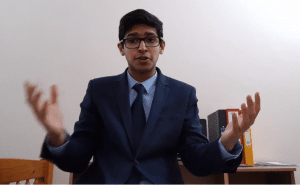 Abir Mohammed, Dhruv Syam and Ansh Jassra put together a polished three-minute film featuring footage from around the world on the competition theme of The changing workplace: same spaces, new realities. The 2020 competition, entitled Bank Camera, Action, challenged entrants to explore the effects of the coronavirus pandemic on the way we work, on jobs and on the economy.
Abir Mohammed, Dhruv Syam and Ansh Jassra put together a polished three-minute film featuring footage from around the world on the competition theme of The changing workplace: same spaces, new realities. The 2020 competition, entitled Bank Camera, Action, challenged entrants to explore the effects of the coronavirus pandemic on the way we work, on jobs and on the economy.
Congratulating the boys on their success, the judges in the annual competition said they enjoyed watching the boys’ film, The Bank of QE, and were impressed by their filmmaking skills.
 QE teacher of Economics Krishna Shah said: “I am extremely proud of the three of them and delighted that all their hard work in putting the film together has been rewarded.”
QE teacher of Economics Krishna Shah said: “I am extremely proud of the three of them and delighted that all their hard work in putting the film together has been rewarded.”
All three boys took on the role of producer, with Abir also acting as editor, while Dhruv was the narrator and Abir and Ansh were both interviewed on-camera.
The film looked at the possible permanent impacts of the pandemic both on individuals and on different sectors of the economy. The boys stated, for example, that:
- Those without access to the technology needed for remote working could lose out, leading to a possible rise in inequality;
- Small firms could find themselves unable to compete with large businesses on economies of scale;
- Unlike those in “on-line service hubs”, such as London, people living in areas of the country concentrated on manufacturing could find it difficult to work from home, putting such areas at risk of mass unemployment and poverty.
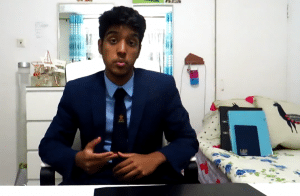 It considered the environmental benefits of reduced levels of commuting and outlined possible technological solutions to the difficulties in maintaining work-life balance that working from home often entails, such as using separate electronic devices for work and personal life and screen-time blocking apps.
It considered the environmental benefits of reduced levels of commuting and outlined possible technological solutions to the difficulties in maintaining work-life balance that working from home often entails, such as using separate electronic devices for work and personal life and screen-time blocking apps.
And Dhruv added: “New technologies have the potential to transform the future of work – things like low-latency whiteboards and faster 5G internet completely bringing back the spontaneity of the office.
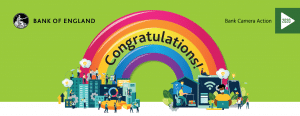 “Ultimately, the question is not whether remote working is here to stay, but to what extent.
“Ultimately, the question is not whether remote working is here to stay, but to what extent.
“Most firms will choose a mixture of both [office working and working from home], but even small shifts in global work patterns will have a profound effect on all our lives. Let’s see what the future holds,” Dhruv concluded.
They won £300 for the School to spend on filmmaking equipment, as well as a £25 Amazon eGift voucher each and a certificate signed by Bank of England Governor Andrew Bailey.
- The film may be viewed on the Bank of England’s competition web page here.

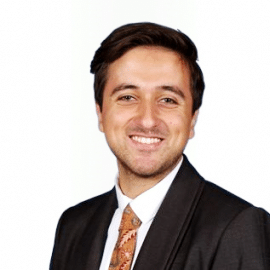 Podcaster Surya Bowyer, QE’s Head of Library Services, warns that we disregard the “interconnectedness of the world’s natural systems” at our peril in a 36-minute episode that features a variety of expert voices and spans the globe, from Egypt and Ethiopia to France and Spain, and from the Amazon to the US.
Podcaster Surya Bowyer, QE’s Head of Library Services, warns that we disregard the “interconnectedness of the world’s natural systems” at our peril in a 36-minute episode that features a variety of expert voices and spans the globe, from Egypt and Ethiopia to France and Spain, and from the Amazon to the US.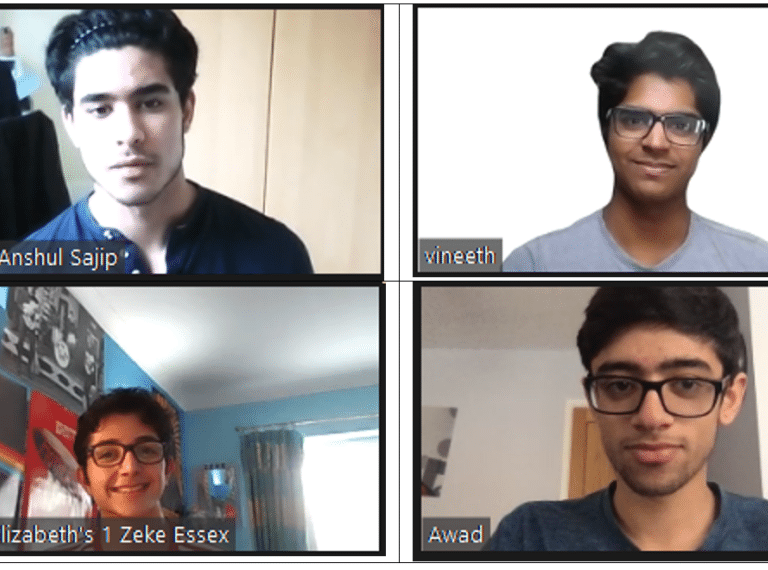
 QE’s Head of Languages, Nora Schlatte, was a member of the jury, and saw Vineeth and Awad in action. “Their research, poise and accuracy of language were amazing,” she said “Vineeth’s opening speech was described as ‘un modèle du genre’ [a model of its kind] and both boys responded very well to some challenging questions. Participating in something like this, especially remotely, is really daunting and they did brilliantly.”
QE’s Head of Languages, Nora Schlatte, was a member of the jury, and saw Vineeth and Awad in action. “Their research, poise and accuracy of language were amazing,” she said “Vineeth’s opening speech was described as ‘un modèle du genre’ [a model of its kind] and both boys responded very well to some challenging questions. Participating in something like this, especially remotely, is really daunting and they did brilliantly.”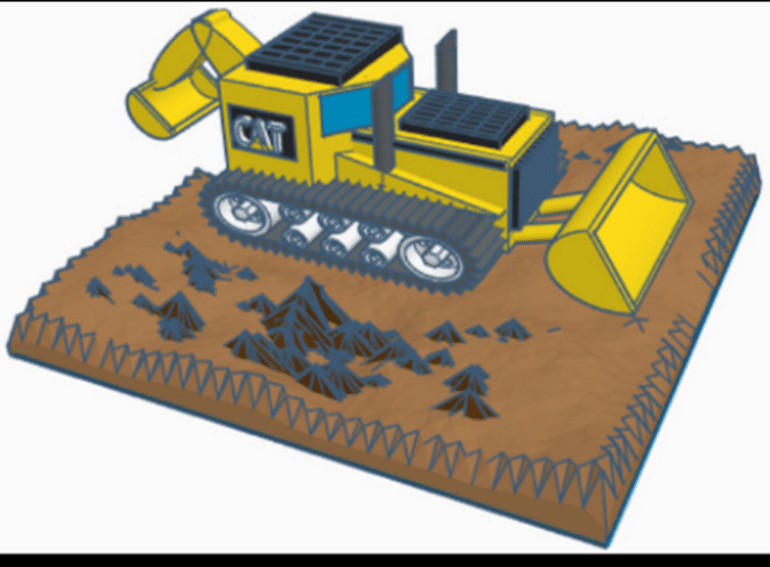
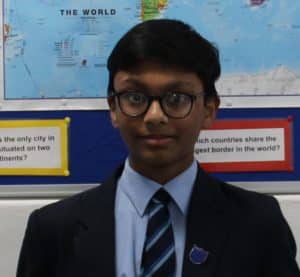 Judges in the Polar Cloud CAT Inc. Design Challenge congratulated him for combining creativity with practicality in his design, and he also won appreciation from other users of American manufacturer Polar 3D’s Polar Cloud online 3D design platform.
Judges in the Polar Cloud CAT Inc. Design Challenge congratulated him for combining creativity with practicality in his design, and he also won appreciation from other users of American manufacturer Polar 3D’s Polar Cloud online 3D design platform.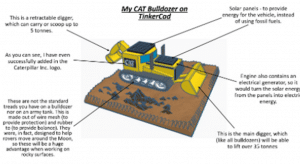 “Firstly, at the back, there is a retractable claw which is able to lift five tonnes. This was created as a feature to utilise when carrying more rubble or dirt. The treads for the vehicle are intended to be made out of wire mesh and rubber to ensure balance and protection, which is a necessity for users who require some means of transportation in more secluded regions.”
“Firstly, at the back, there is a retractable claw which is able to lift five tonnes. This was created as a feature to utilise when carrying more rubble or dirt. The treads for the vehicle are intended to be made out of wire mesh and rubber to ensure balance and protection, which is a necessity for users who require some means of transportation in more secluded regions.”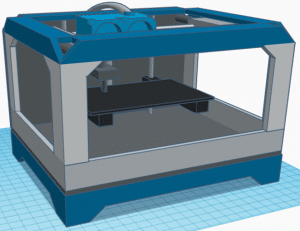 Judges stipulated that entries should not only fulfil criteria such as printability, design execution and creativity, but also prioritised those, such as Keon’s, which garnered higher numbers of ‘likes’ on the online platform.
Judges stipulated that entries should not only fulfil criteria such as printability, design execution and creativity, but also prioritised those, such as Keon’s, which garnered higher numbers of ‘likes’ on the online platform.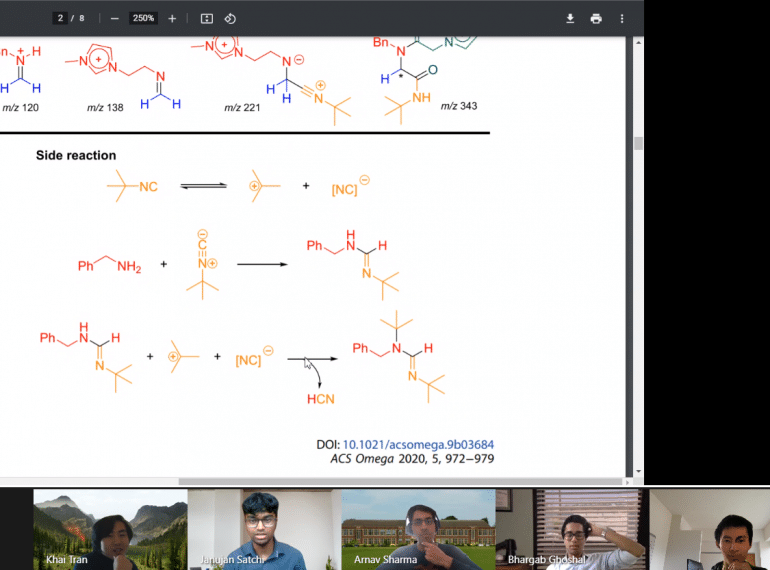
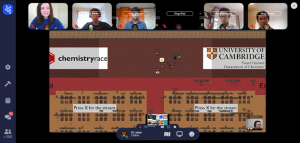 QE’s Chem Taj team were ranked fifth out of the 42 teams competing in the Cambridge Chemistry Race, many of them drawn from the country’s leading academic schools.
QE’s Chem Taj team were ranked fifth out of the 42 teams competing in the Cambridge Chemistry Race, many of them drawn from the country’s leading academic schools. Khai agreed, saying “it was interesting to apply the Chemistry we’ve learnt to topics beyond our specification”, while Janujan said that by working as a team, they were able to “apply different thought processes to the problem”.
Khai agreed, saying “it was interesting to apply the Chemistry we’ve learnt to topics beyond our specification”, while Janujan said that by working as a team, they were able to “apply different thought processes to the problem”.
 Question: Two congruent pentagons are each formed by removing a right-angled isosceles triangle from a square of side-length 1.
Question: Two congruent pentagons are each formed by removing a right-angled isosceles triangle from a square of side-length 1.